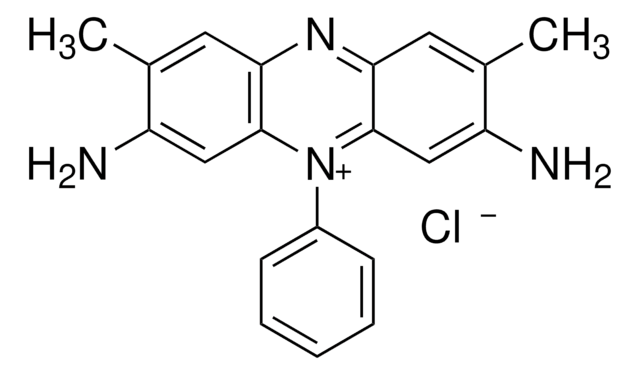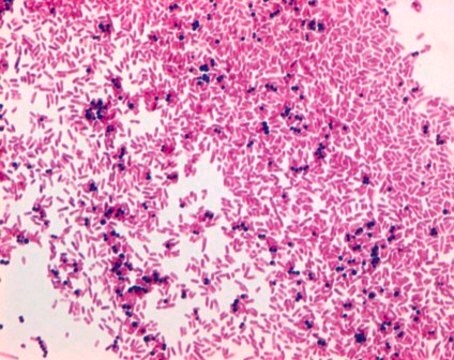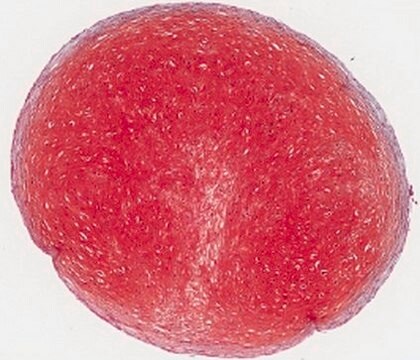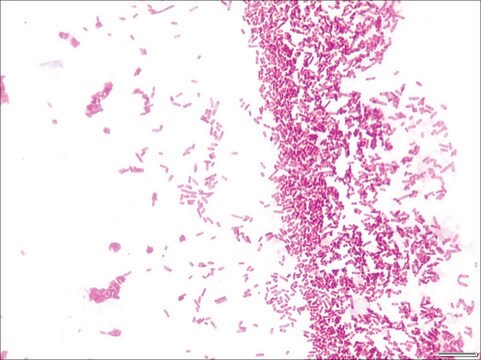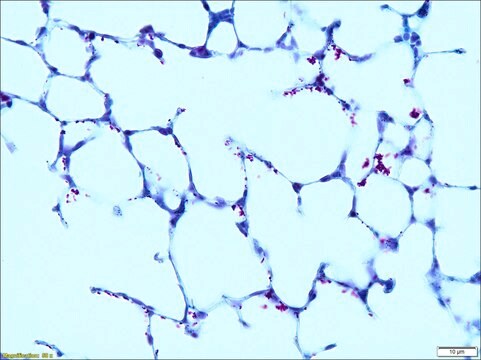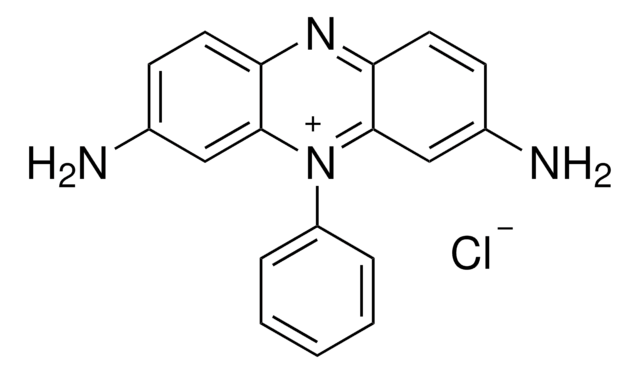84120
Safranin O
indicator (pH 0.3-1.0), for microscopy (Bact., Bot., Hist.)
Synonym(s):
Basic Red 2, Cotton Red, Gossypimine, Safranin T, Safranin Y or A
About This Item
Recommended Products
grade
for microscopy (Bact., Bot., Hist.)
indicator (pH 0.3-1.0)
form
powder or crystals
technique(s)
titration: suitable
pH
10 (20 °C, 10 g/L)
solubility
methanol: 0.01 g/10 mL, red
εmax
≥1000 at 525-535 nm in 50% ethanol
suitability
suitable for microscopy
application(s)
diagnostic assay manufacturing
hematology
histology
microbiology
storage temp.
room temp
SMILES string
[Cl-].Cc1cc2nc3cc(C)c(N)cc3[n+](-c4ccccc4)c2cc1N
InChI
1S/C20H18N4.ClH/c1-12-8-17-19(10-15(12)21)24(14-6-4-3-5-7-14)20-11-16(22)13(2)9-18(20)23-17;/h3-11H,1-2H3,(H3,21,22);1H
InChI key
OARRHUQTFTUEOS-UHFFFAOYSA-N
Looking for similar products? Visit Product Comparison Guide
General description
Application
- Safranin O is widely employed as a microbiological stain, especially as a counterstain in Gram staining to distinguish Gram-positive from Gram-negative micro-organisms, and for staining bacterial spores.
- It is used to demonstrate glycosaminoglycans in human and animal histological specimens and nuclei.
- It is a component of Benda′s polychrome stain.
- It is a component of various polychromes and lignin stains for botanical staining applications.
- It has also been applied for the demonstration of mast cells in cytospin preparations and staining surgical frozen sections.
Signal Word
Danger
Hazard Statements
Precautionary Statements
Hazard Classifications
Eye Dam. 1
Storage Class Code
11 - Combustible Solids
WGK
WGK 3
Personal Protective Equipment
Regulatory Listings
Regulatory Listings are mainly provided for chemical products. Only limited information can be provided here for non-chemical products. No entry means none of the components are listed. It is the user’s obligation to ensure the safe and legal use of the product.
JAN Code
84120-BULK:
84120-VAR:
84120-25G:
84120-6X100G:
84120-100G:
Choose from one of the most recent versions:
Already Own This Product?
Find documentation for the products that you have recently purchased in the Document Library.
Customers Also Viewed
Our team of scientists has experience in all areas of research including Life Science, Material Science, Chemical Synthesis, Chromatography, Analytical and many others.
Contact Technical Service